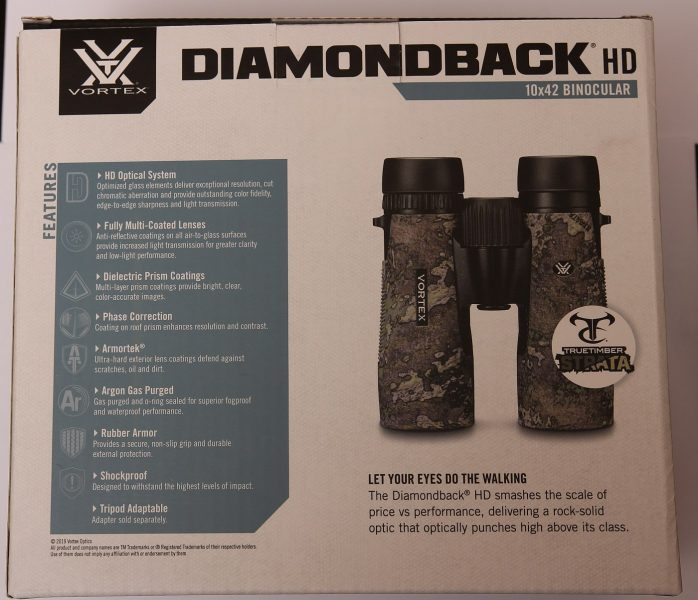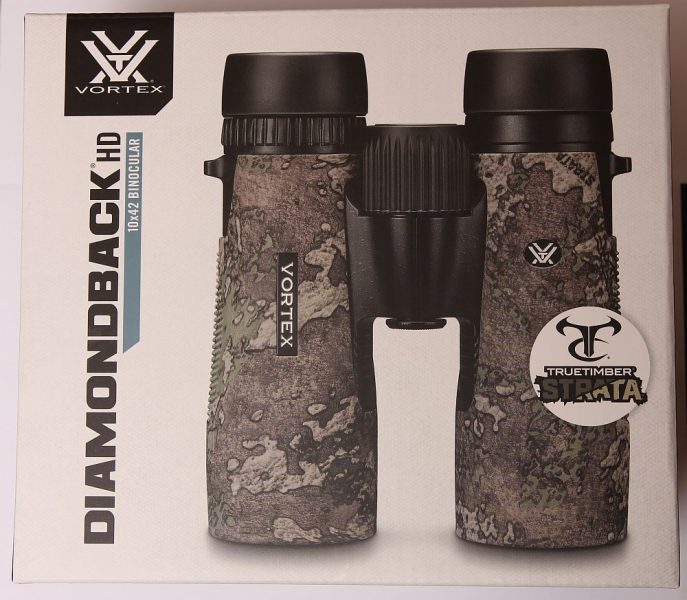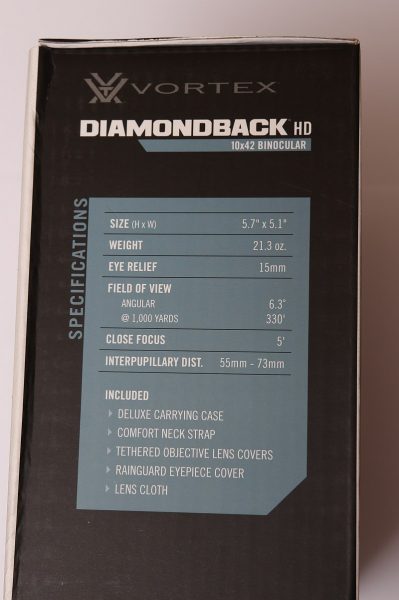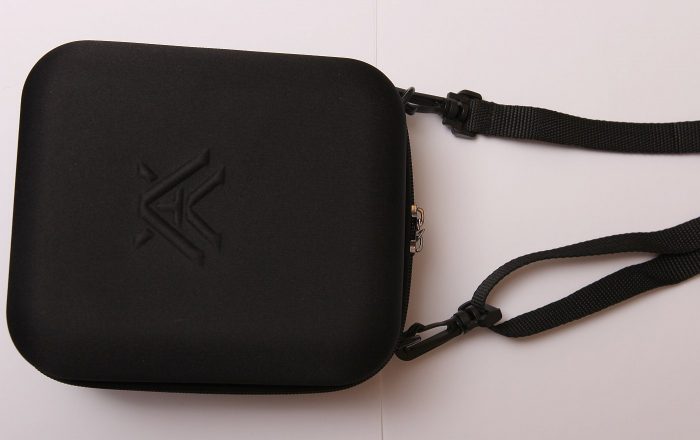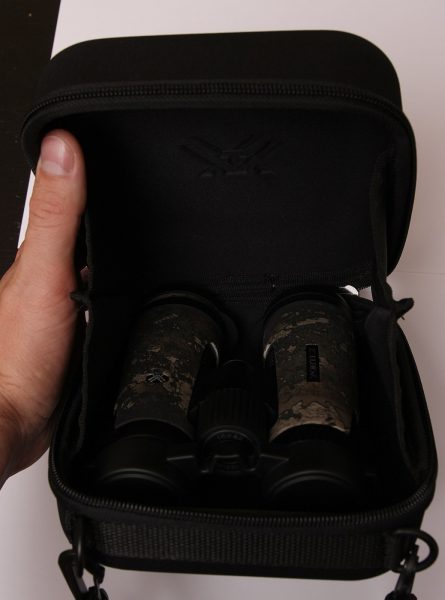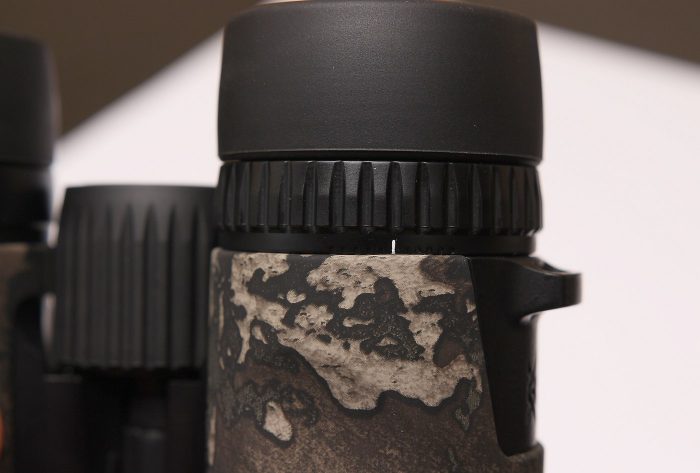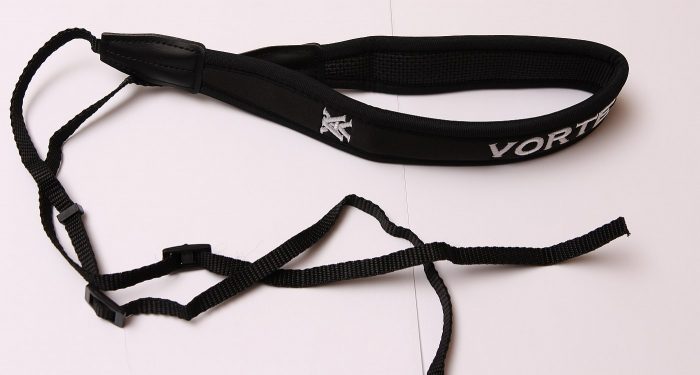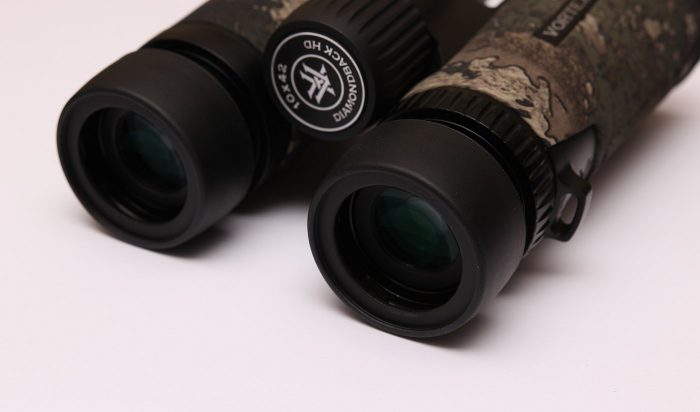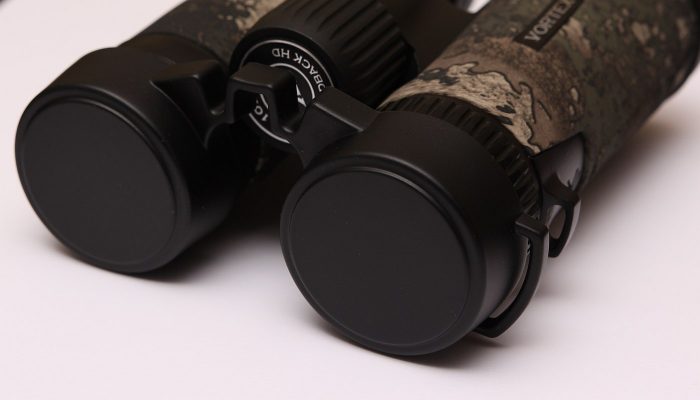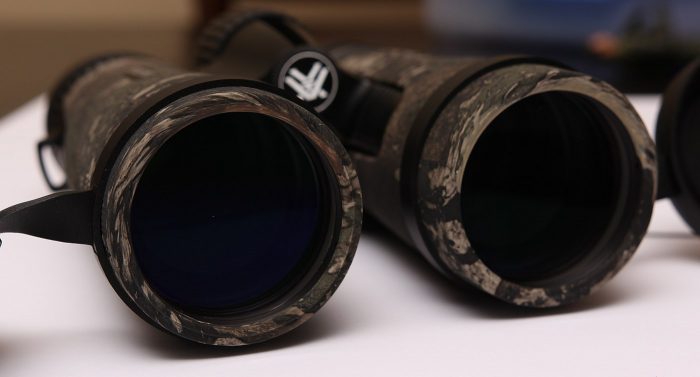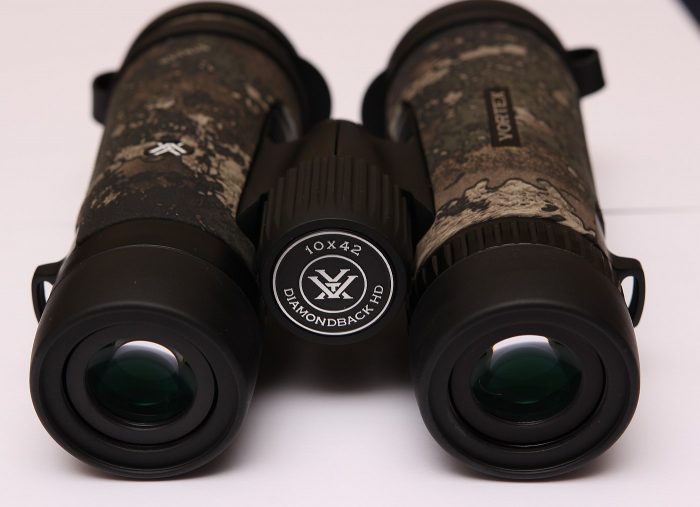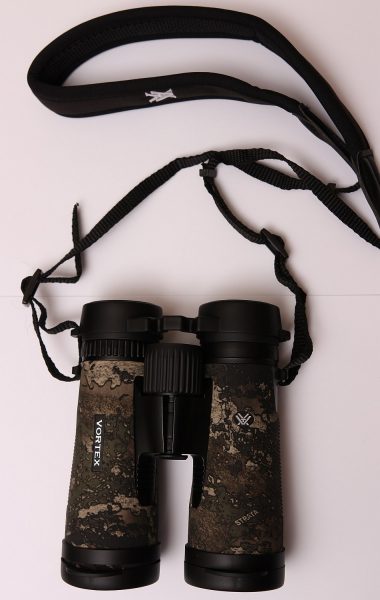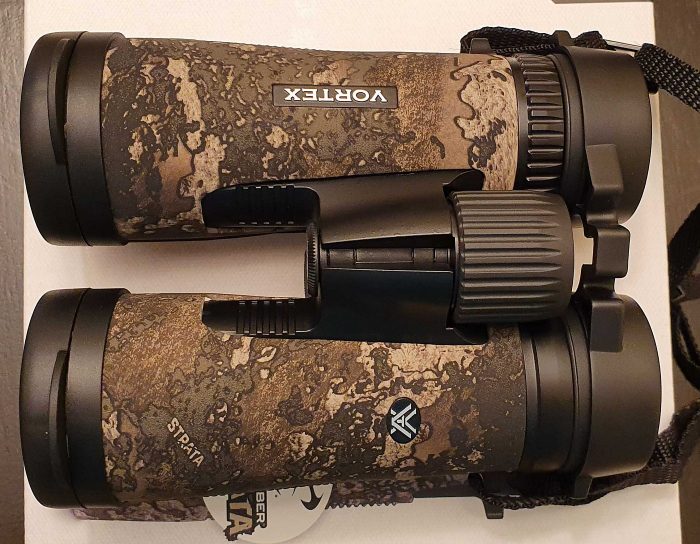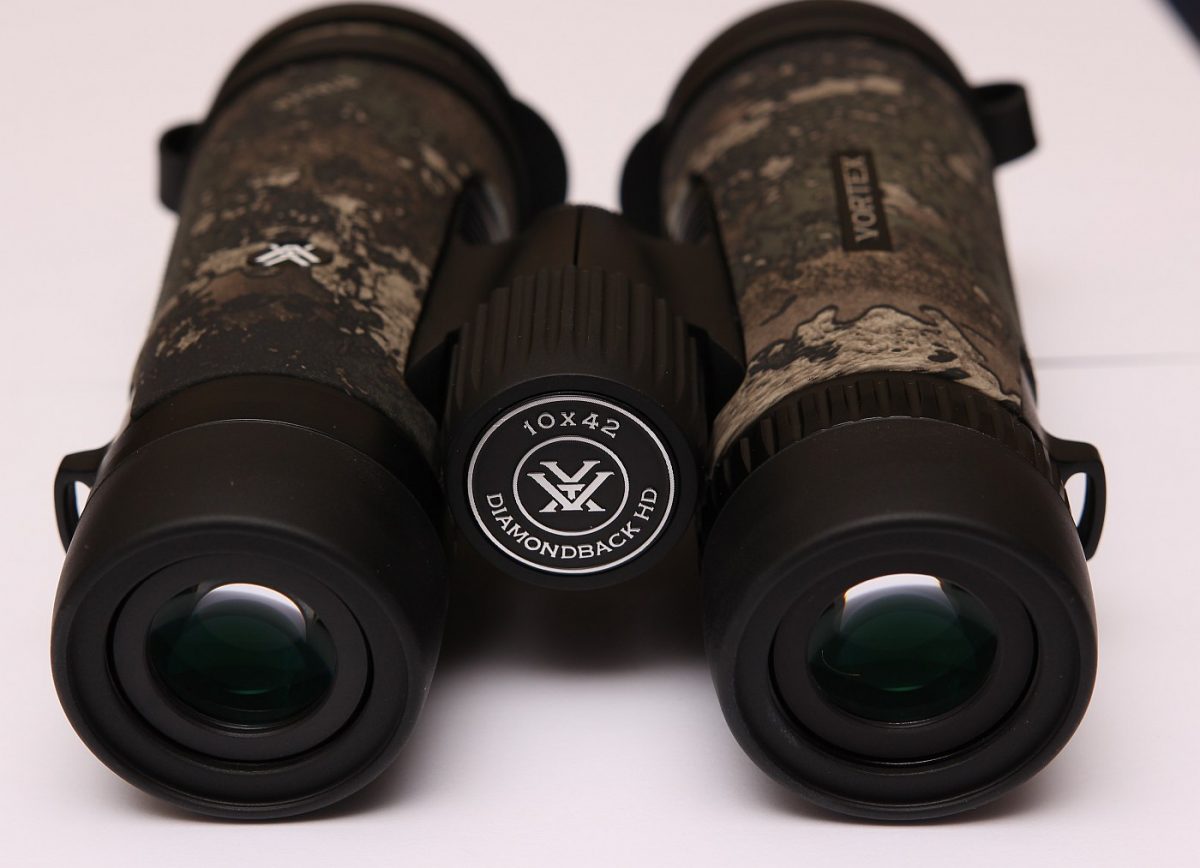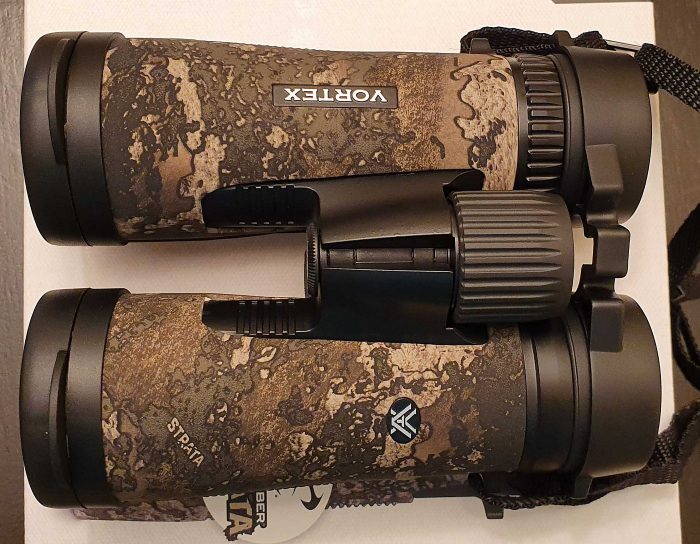
The Vortex Diamondback HD 10×42 is a medium size set of binos great for hunting or bird watching. I picked mine up on sale at Cabelas in TrueTimber camo for just over $300. This version was slightly cheaper than the regular version, but the regular version also came with the GlassPak chest harness.
Vortex Diamondback 10×42 Binoculars Specs
- 10X magnification, 42mm objective (that’s the 10×42 part)
- 330 feet/1000 yards field of view (aka 6.3 degrees)
- Focus from 5 feet and out
- Weight: 21.3 ounces (604 grams)
- 5.7″ X 5.1″ (14.5 X 13cm)
Why I picked this size/format
The spot I normally hunt has visibility out to 5-600 meters, so a 10X is just about the perfect amount of magnification to glass out to the treeline. 8X or 12X would probably be OK too, but I definitely wouldn’t need anything with more or less magnification than that.
At 10X, I’ve found that a good quality set of binos will gather enough light at dusk with a 42mm objective. 50mm gathers more light, but I find that light is most useful at just minutes before legal light is over, and after that. Meanwhile, a 30mm objective really struggles with dusk when it’s asked to do 10X magnification. That means that a 42mm objective will do the job 95% of the time for me and it’ll be cheaper, more compact and out of the way compared with a 50mm.
Roof prism binoculars like this one are more compact than porro prism ones, which is why they’re the default choice for hunters now.
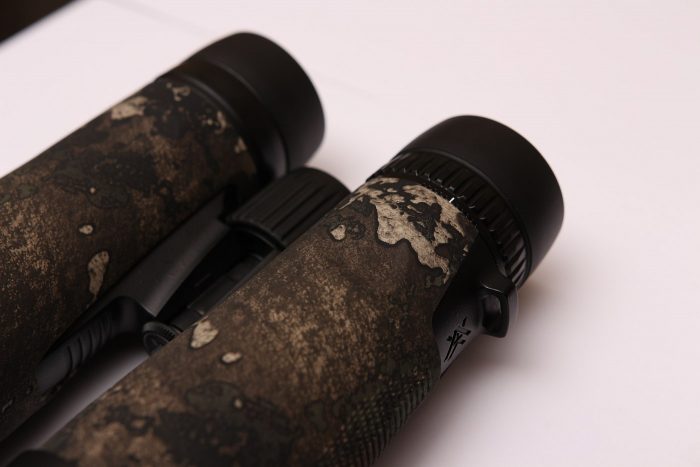
Brand
After you pick your format, next up is brand. There are a few very similar choices in this format+price range. The Bushnell Engage DX is fairly spot on for specs+price, as is the Nikon Prostaff 7s, Leupold Marksman, and even Cabela’s house brand Intensity binoculars are close in price and specs.
I went with Vortex because their warranty is amazing: lifetime, transferrable, no questions asked. I could have paid a bit more and gone with their GlassPak version, but I don’t go on massive long range hikes where I need to glass mountainsides for hours on end. I typically stand hike with a view, so a basic strap and bare set on my chest is fine.
I could have went with the cheaper Vortex Crossfire binoculars, but I wanted better optics of the Diamondback, and I didn’t want to go up to $750 for the Viper binos.
Tripod/car window mounting
I did a tiny bit of research on this, and I thought I’d share. Tripod mounting your binoculars makes it more stable and easier to look through. Your eyes and brain have to make up for any shake, and they’re not great at it when there’s a lot of magnification and shake involved. Tripod mounted binos are better for use as a spotter at the shooting range, and allow for more comfortable, long-term glassing of a mountainside.
Option 1: There’s a cap in the front of the focus ring that you can unscrew and exposes a hole. You can screw an adapter into that hole to tripod mount the binos.
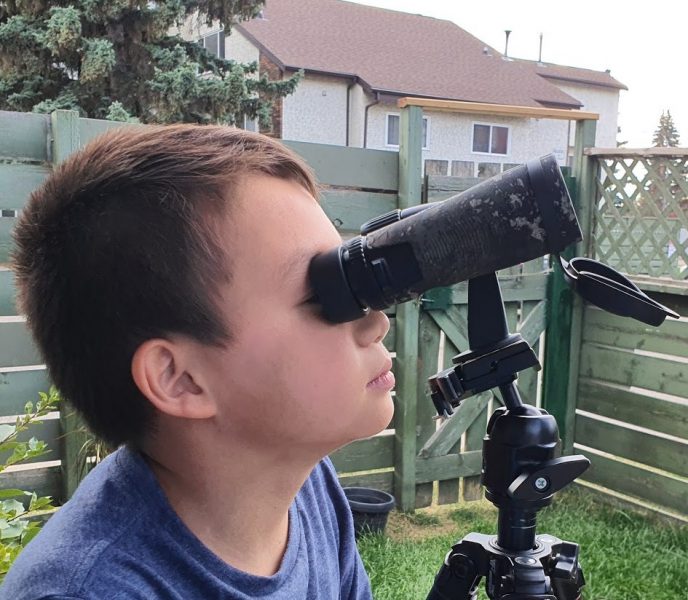
Option 2: Use a generic binocular mount that straps overtop. Not nearly as slick, but these can be more solid than some adapter mounts.
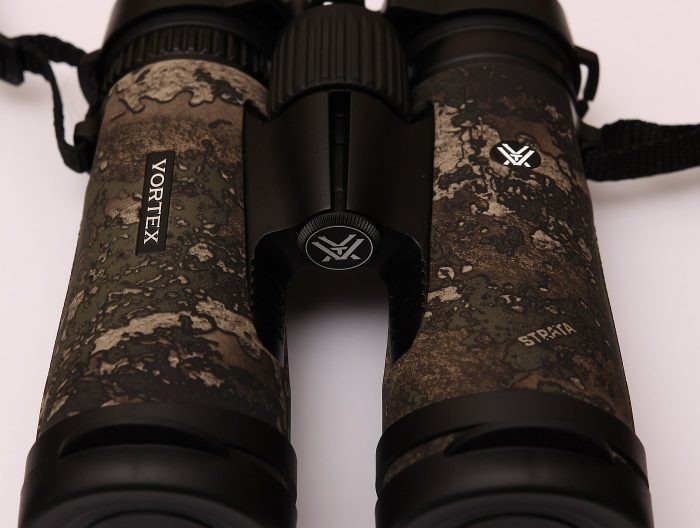
Conclusion
I don’t have the equipment to say whether the optical quality on these binos are better, the same, or worse than the competition at the same price point. I’ve used them a couple times at the range and so far, they’ve been excellent. I had been trying to use a Vortex Solo Monocular, which is not a super cheap piece of glass at $130, but that monocular is so much worse in optical quality than this set of binos that it’s almost funny.
It’s reassuring that if they fail, I can send them in for repairs without having to worry about a warranty.
